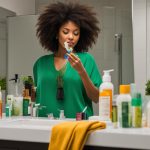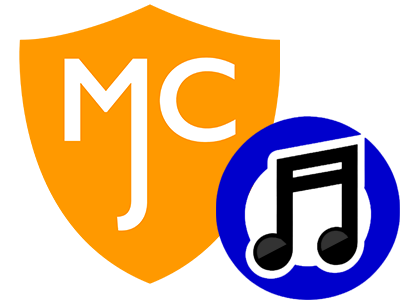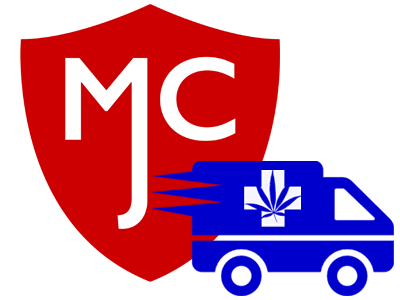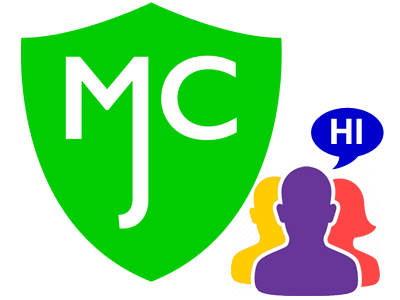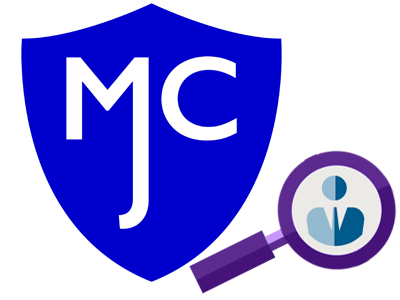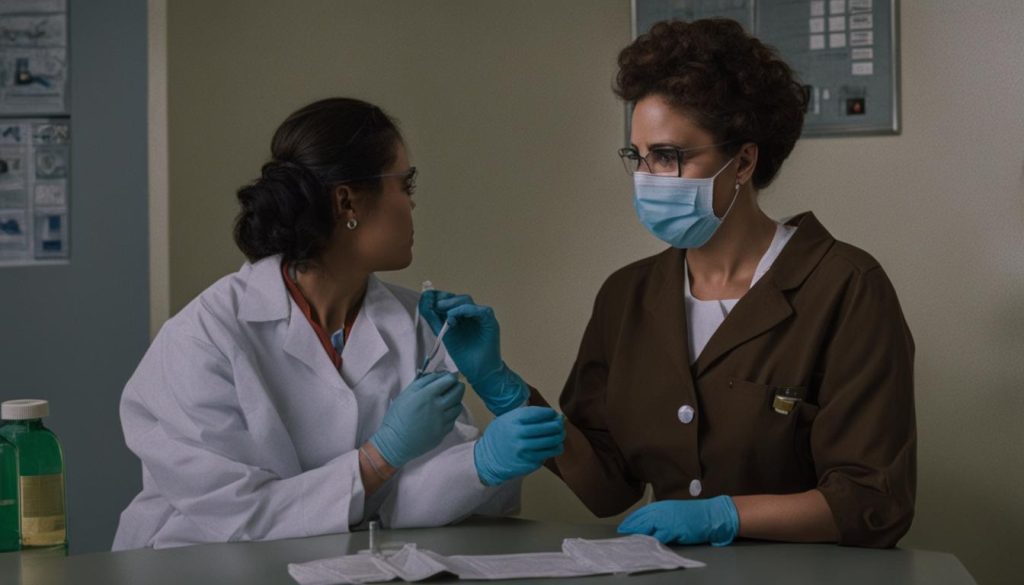
Drug abuse is a critical problem worldwide, and drug testing is a common practice in workplaces to ensure safety. Approximately 20 million people are screened in the U.S. each year in workplace drug testing programs. Some individuals attempt to beat drug tests by using detoxifying agents, adulterants, or synthetic urine. In this article, we will discuss strategies and tips to help you pass a supervised drug test successfully.
Key Takeaways
- Understanding the different types of drug tests is crucial for proper preparation.
- Saliva drug tests are quick and easy, and detox drinks can help you pass them.
- Urine drug tests are the most popular, but altering the result can have serious consequences.
- Hair drug tests can detect drug use over a longer period, but tampering with the specimen is risky.
- Blood drug tests are rarely used, but similar strategies to urine tests can be effective.
Understanding Different Types of Drug Tests
When it comes to drug testing, various types of tests can be conducted using different specimens. It’s important to understand these different types of drug tests to prepare effectively for your specific situation. The four primary types of drug tests include saliva, urine, hair, and blood tests.
Saliva Drug Test
A saliva drug test, also known as a mouth swab test, is a quick and non-invasive method of detecting drug use. This type of test is commonly used due to its simplicity and quick results. Saliva tests can detect drugs in your system for up to two days after use, making it an essential consideration for those facing short-term drug detection windows.
Urine Drug Test
The urine drug test is the most popular type of drug test and is widely used in workplaces and other settings. It is a cost-effective and reliable method for detecting recent drug use. Urine tests can detect a wide range of drugs and their metabolites and have a longer detection window compared to saliva tests. The detection window for urine tests varies for different drugs, ranging from a few days to several weeks depending on factors such as drug type, frequency of use, and metabolism.
Hair Drug Test
A hair drug test is less common but can detect drug use over a longer period compared to other tests. This type of test involves analyzing a small sample of hair to detect the presence of drugs and their metabolites. Hair tests have a detection window of up to 90 days, making them a preferred choice for detecting long-term drug use. However, hair tests are less suitable for detecting recent drug use compared to saliva and urine tests.
Blood Drug Test
Blood drug tests are rarely used except in specific circumstances, such as determining recent drug intoxication or testing for specific substances immediately after suspected drug use. Blood tests provide accurate and reliable results, but their detection window is relatively short. Drugs can typically be detected in the bloodstream for up to two days after use. Blood tests are more invasive and expensive compared to other types of drug tests, which is why they are used in limited situations.
Understanding the different types of drug tests and their characteristics can help you prepare effectively and navigate the drug testing process with confidence. Whether you are facing a saliva, urine, hair, or blood test, being informed about the detection windows and specificities of each test can help you make informed decisions and take necessary precautions to achieve a negative test result.
How to Pass a Saliva Drug Test
Saliva drug tests are commonly used due to their simplicity and quick results. These tests can detect drugs in your system for up to two days, making them an effective method for screening recent drug use. If you have a saliva drug test coming up and want to ensure a negative result, there are a few strategies you can employ.
Detox Drinks
One popular method to pass a saliva drug test is by using detox drinks. These specially formulated beverages are designed to help eliminate traces of drugs and their metabolites from your saliva, giving you a better chance of passing the test. Detox drinks work by temporarily flushing out the toxins in your mouth, providing a window of time during which the drug metabolites are undetectable.
When using detox drinks, it’s important to follow the instructions carefully and time your consumption correctly. Some detox drinks need to be taken a specific number of hours before the test, while others should be consumed shortly before the test. Be sure to do your research and choose a reputable detox drink that has positive reviews from users.
Other Detoxification Methods
In addition to detox drinks, there are other detoxification methods that can help you pass a saliva drug test. These include brushing your teeth and gums thoroughly, using mouthwash, and staying hydrated. By maintaining good oral hygiene and drinking plenty of water, you can help reduce the concentration of drug metabolites in your saliva.
It’s important to note that while these methods may increase your chances of passing a saliva drug test, they are not foolproof. The best way to ensure a negative result is to abstain from drug use altogether.
| Brand | Features | Price |
|---|---|---|
| Detoxify Mega Clean | Powerful cleansing formula | $39.99 |
| Rescue Detox Ice | Rapid toxin elimination | $29.99 |
| Stinger Detox Mouthwash | Convenient and easy to use | $19.99 |
Tips for Passing a Urine Drug Test
When facing a urine drug test, some individuals may be tempted to alter the test result in order to pass. However, it’s important to understand that tampering with the test can have serious consequences. Instead, we recommend following safe and legal strategies to ensure a negative urine test result.
One important aspect to consider is the urine collection process. During the test, your urine will be collected in a cup or container under supervision. It’s crucial to provide a sufficient amount of urine for testing, as insufficient samples may lead to a failed test or the need for retesting.
Additionally, altering the test result by using adulterants or synthetic urine is not advised. Testing laboratories are equipped with methods to detect these substances, and any attempt to cheat the test can result in penalties or even legal consequences. It’s always best to approach the test with honesty and integrity.
“Attempting to alter the test result can have serious consequences. It’s crucial to follow safe and legal strategies to ensure a negative urine test result.”
Understanding Hair Drug Tests and How to Pass Them
When it comes to drug testing, hair drug tests are less common but can be highly effective in detecting drug use over a longer period compared to other tests. Hair follicles trap drugs and their metabolites as they grow, creating a record of drug use that can span several months. To ensure a passing result on a hair drug test, it’s important to be aware of different strategies and methods that can help you pass.
One option is to use marijuana detox kits specifically designed to cleanse your hair of any drug residues. These kits usually come with shampoos and conditioners that help eliminate traces of drugs from the hair shaft. By following the instructions carefully, you can increase your chances of passing a hair drug test.
Another approach is to consider using a synthetic urine device or explore methods that involve tampering with the specimen. However, it’s important to note that these methods may have legal consequences and are not foolproof. It’s essential to weigh the risks before deciding to use these approaches.
Strategies for Passing a Blood Drug Test
When it comes to passing a blood drug test, there are several strategies that can help increase your chances of a negative result. One of the most important factors to consider is THC detox, as THC is the primary psychoactive component of marijuana and can remain in the bloodstream for up to two days after use. Detoxification methods, such as abstaining from drug use and engaging in healthy habits like exercise and staying hydrated, can help speed up the elimination of THC from the body.
Another crucial aspect of passing a blood drug test is proper sample collection. The accuracy of the test result depends on the correct collection, handling, and preservation of the blood sample. It’s important to ensure that the sample is collected by a certified professional and that all necessary precautions are taken to maintain the integrity of the sample throughout the process.
Table: THC Detox Methods for Passing a Blood Drug Test
| Method | Effectiveness | Additional Notes |
|---|---|---|
| Abstaining from drug use | High | Allow sufficient time for THC to be eliminated from the bloodstream. |
| Healthy lifestyle habits | Moderate | Regular exercise, staying hydrated, and eating a balanced diet can support detoxification. |
| Detox drinks | Varies | Some detox drinks claim to flush out toxins from the body, but their effectiveness may vary. |
It’s important to note that attempting to tamper with the blood sample or using synthetic urine is not recommended, as these methods can be easily detected and may lead to serious consequences. It’s always best to follow safe and legal strategies when aiming to pass a blood drug test.

Tips for Successfully Navigating Supervised Drug Tests
When it comes to supervised drug tests, visual observation during the specimen collection process is a critical component. These tests are more invasive and closely monitored to ensure the accuracy of the results. To ensure you navigate supervised drug tests successfully, it’s important to understand the protocols and procedures involved.
One strategy to increase your chances of passing a supervised drug test is to use detoxification methods, such as detox drinks or detox pills, in combination with following proper testing protocols. These products are designed to help eliminate traces of drugs from your system, ensuring a negative test result.
Additionally, it’s essential to be familiar with the specific requirements of the test you will be undergoing. Understanding the level of visual observation and direct watch involved will allow you to prepare accordingly. By staying informed and following the appropriate strategies, you can navigate supervised drug tests with confidence and increase your chances of passing.
“Understanding the level of visual observation and direct watch involved will allow you to prepare accordingly.”
| Test Type | Level of Visual Observation |
|---|---|
| Saliva Drug Test | Direct observation is typically minimal, focused on ensuring the sample is not tampered with. |
| Urine Drug Test | Visual observation may be more extensive, with the collector present in the room to ensure the sample’s integrity. |
| Hair Drug Test | Visual observation is less relevant in hair drug tests as the sample is obtained from the individual’s head and not directly observed during collection. |
| Blood Drug Test | Visual observation is typically limited to ensuring proper sample collection and integrity. |
By understanding the level of visual observation associated with each test type, you are better equipped to prepare for the specific requirements of your supervised drug test. This knowledge empowers you to take the necessary steps to ensure a successful outcome.

Tips for Navigating Visual Observation during Supervised Drug Tests:
- Follow all instructions provided by the testing facility to minimize any interruptions during the collection process.
- Be aware of the level of direct observation involved in your particular test type and prepare accordingly.
- Ensure you are familiar with any detoxification methods that may be helpful in eliminating traces of drugs from your system.
- Maintain a calm and cooperative demeanor during the test to demonstrate your compliance.
- Stay informed about current drug testing protocols and procedures to align your preparations accordingly.
- Remember that attempting to tamper with or deceive the test through methods like using synthetic urine is highly discouraged and may have legal consequences.
By following these tips and strategies, you can navigate supervised drug tests with confidence, ensuring a successful outcome and increased chances of passing.
Common Defenses for Positive Drug Tests and How to Debunk Them
When faced with a positive drug test result, individuals often come up with various defenses in an attempt to explain away their positive result. It is crucial to debunk these common defenses to ensure the accuracy of drug test results and maintain a drug-free workplace. Here, we examine some of the common defenses and provide insights into the efficacy of these claims.
The Poppyseed Defense
One common defense is blaming the positive drug test result on the consumption of poppyseeds. While it is true that poppyseeds can contain trace amounts of opiates, the levels found in poppyseeds are typically not significant enough to cause a positive drug test result. Most drug testing laboratories have a threshold level above which a result is considered positive, and the amount of opiates from poppyseeds is unlikely to exceed this threshold.
The Secondhand Smoke Defense
Another defense frequently used is the claim of exposure to secondhand marijuana smoke. While it is possible to detect trace amounts of THC, the active component of marijuana, in the body through passive exposure, the levels typically found in secondhand smoke are too low to trigger a positive drug test. Most drug tests have cutoff levels that account for this possibility and require a certain concentration of drugs or their metabolites in the body to render a positive result.
The Contaminated Substance Defense
Some individuals may argue that the drug test result was due to the ingestion of a contaminated substance, such as a medication or dietary supplement. While it is essential to disclose any medications or supplements taken before a drug test, laboratories can differentiate between common medications and illicit drugs through confirmatory testing. The presence of specific drug metabolites associated with illicit drug use is unlikely to result from the consumption of legitimate over-the-counter medications or supplements.
Debunking these common defenses is crucial in ensuring the accuracy and integrity of drug test results. By understanding the limitations and thresholds of drug testing methods, employers and testing professionals can confidently identify legitimate positive results and maintain a drug-free workplace.
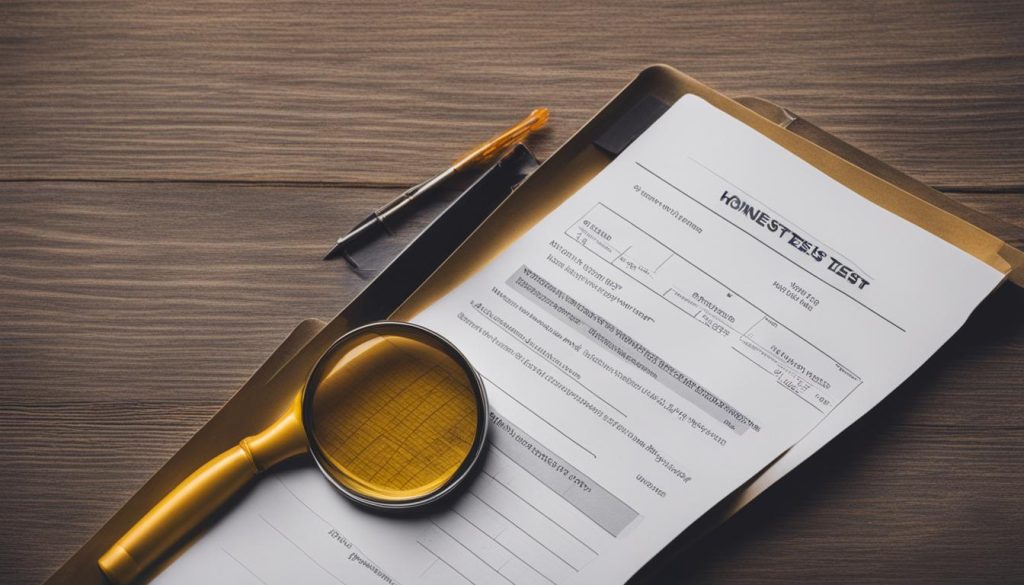
Workplace Drug Testing Programs and Compliance
Workplace drug testing programs play a crucial role in maintaining a safe and drug-free work environment. By implementing these programs, employers can ensure the well-being and productivity of their employees. However, it is essential for employers to comply with applicable local, state, and federal laws when implementing drug testing programs. This compliance helps protect the rights of employees while ensuring the accuracy and reliability of drug test results.
Compliance with Drug-Free Workplace Program
A drug-free workplace program is a comprehensive approach to preventing drug abuse in the workplace. It typically involves establishing policies, providing employee education and awareness, and conducting regular drug testing. Compliance with a drug-free workplace program requires adherence to specific protocols and procedures.
Employers should start by clearly outlining their drug testing policies and ensuring that all employees are aware of them. This includes providing written notification of the policy, explaining the circumstances under which drug testing may be conducted, and detailing the consequences of a positive test result. By communicating these policies effectively, employers can ensure that employees understand their rights and responsibilities.
Additionally, employers must follow proper testing protocols to maintain compliance. This includes using certified laboratories for drug testing and following chain of custody procedures to preserve the integrity of the specimen. Adhering to these protocols helps prevent tampering or contamination of test samples, ensuring accurate and reliable results.
Protecting Employee Rights and Confidentiality
While workplace drug testing programs are necessary for ensuring a safe work environment, it is equally important to protect employee rights and confidentiality. A comprehensive drug testing program should include measures to safeguard employee privacy and maintain the confidentiality of drug testing records.
Designating designated individuals responsible for handling and maintaining the privacy of drug testing records can help protect employee confidentiality. These individuals should receive training on privacy laws and regulations to ensure compliance. Additionally, implementing secure systems for storing and accessing drug testing records can further enhance confidentiality and prevent unauthorized access.
By prioritizing compliance with drug testing regulations and ensuring the protection of employee rights, employers can effectively maintain a drug-free workplace and promote a safe and healthy work environment for all employees.
Ensuring Accuracy and Confidentiality in Drug Testing
When it comes to drug testing, accuracy and confidentiality are of utmost importance. Employers rely on accurate test results to maintain a safe and drug-free workplace, while employees expect their privacy to be respected. In this section, we will discuss the key factors involved in ensuring the accuracy of drug test results and protecting the confidentiality of employee records.
The Role of Certified Laboratories and MROs
Certified laboratories play a critical role in drug testing by conducting the analysis of specimens collected from individuals. These laboratories adhere to strict protocols and guidelines to ensure accurate and reliable results. Medical Review Officers (MROs) are responsible for evaluating and interpreting the test results in the context of an individual’s medical history and any legitimate use of prescription medication. Their role is to ensure that the results are accurate and free from any potential errors or false positives.
Proper Specimen Collection Protocols
Accurate drug test results begin with proper specimen collection protocols. These protocols include following precise procedures for specimen collection, labeling, and documentation. It is essential to maintain the chain of custody throughout the entire process to prevent any tampering or contamination of the samples. By adhering to these protocols, the integrity of the specimens is preserved, increasing the accuracy of the test results.
Confidentiality of Employee Drug Testing Records
The confidentiality of employee drug testing records is crucial to protect the privacy and rights of individuals. Organizations should have designated individuals responsible for handling and maintaining the privacy of these records. Access to the records should be restricted to authorized personnel only, and strict security measures should be in place to prevent unauthorized disclosure. By ensuring the confidentiality of employee drug testing records, organizations can build trust and maintain a respectful workplace environment.
By prioritizing accuracy in drug testing procedures, organizations can confidently make informed decisions regarding employee safety and compliance. Protecting the confidentiality of employee records is equally important, ensuring the trust and privacy of individuals are respected. By maintaining these standards, drug testing programs can effectively contribute to creating and maintaining safe and drug-free workplaces.
Conclusion
Successfully passing a supervised drug test requires a strategic approach and thorough understanding of the testing process. Our comprehensive guide has provided valuable insights and tips to help you navigate drug tests with confidence.
By familiarizing yourself with the different types of drug tests, such as saliva, urine, hair, and blood tests, you can better prepare for your specific situation. Remember that each test has its own detection period, so timing is crucial.
It’s important to note that attempting to alter test results using adulterants or synthetic urine can have serious consequences and may be detected. Instead, focus on safe and legal strategies, such as using detox drinks or detoxification kits, to eliminate traces of drugs from your system.
Staying informed about current drug testing procedures and adhering to proper protocols is key to passing a supervised drug test. By following our expert advice and employing these proven strategies, you can increase your chances of achieving a negative test result and successfully navigate the challenges of drug testing.
FAQ
Is it possible to beat a drug test by using detoxifying agents or synthetic urine?
While some individuals may attempt to alter drug test results using detoxifying agents or synthetic urine, these methods can be detected, and using them may have serious consequences. It is best to follow safe and legal strategies to ensure a negative test result.
What are the different types of drug tests?
Drug tests can be conducted using saliva, urine, hair, or blood samples. Saliva and urine tests are the most common, while hair tests are rarer but can detect drug use over a longer period. Blood tests are rarely used except in specific circumstances.
How can I pass a saliva drug test?
To pass a saliva drug test, you can use detox drinks or other detoxification methods. These products are designed to eliminate traces of drugs and metabolites from your saliva, ensuring a negative test result.
Are there any tips for passing a urine drug test?
While some individuals may attempt to alter urine test results by using adulterants or synthetic urine, it is important to note that these methods can be detected and may have serious consequences. It is best to follow safe and legal strategies to ensure a negative urine test result.
How can I pass a hair drug test?
To pass a hair drug test, some individuals may use marijuana detox kits, synthetic urine devices, or methods to tamper with the specimen. However, it is important to note that these methods may have legal consequences and are not foolproof.
How can I pass a blood drug test?
The same strategies used for passing a urine drug test can be effective for passing a blood drug test. THC detox methods and detoxification kits can help eliminate traces of drugs from your system, ensuring a negative test result.
How can I navigate a supervised drug test successfully?
To navigate supervised drug tests successfully, it is important to understand the protocols and procedures involved. Using detoxification methods, such as detox drinks or detox pills, in combination with following proper testing protocols, can help increase your chances of passing.
What are some common defenses for positive drug tests and how can they be debunked?
Individuals may come up with various defenses when faced with a positive drug test result, such as blaming the result on other factors like poppyseed consumption or secondhand marijuana smoke. It is important to understand and debunk these common defenses to ensure the accuracy of drug test results.
How should employers comply with workplace drug testing programs?
Employers should comply with applicable local, state, and federal laws when implementing drug testing programs. Adhering to proper protocols, including using certified laboratories and following chain of custody procedures, can help maintain compliance and ensure accurate test results.
How can accuracy and confidentiality be ensured in drug testing?
Ensuring the accuracy of drug test results requires certified laboratories and Medical Review Officers (MROs) to interpret and evaluate the results. Following proper specimen collection protocols and maintaining the chain of custody are critical. Additionally, protecting the confidentiality of employee drug testing records is important, and organizations should have designated individuals responsible for handling and maintaining the privacy of these records.
Source Links
- https://www.ndtv.com/partner-content/health-supplements/how-to-pass-a-drug-test-foolproof-ways-to-pass-any-type-of-drug-test-complete-guide-3947696
- https://www.aacc.org/cln/cln-daily/2022/how-people-try-to-beat-drug-testing-and-defend-positive-results
- https://www.samhsa.gov/workplace/drug-testing-resources








